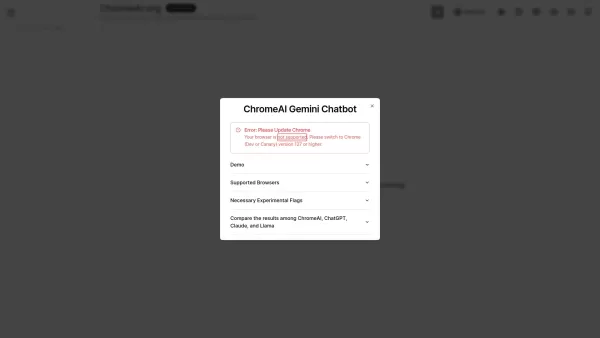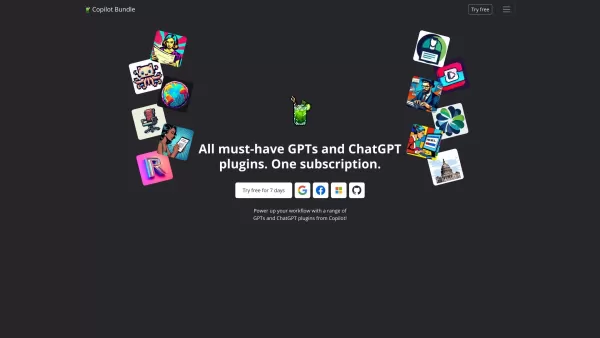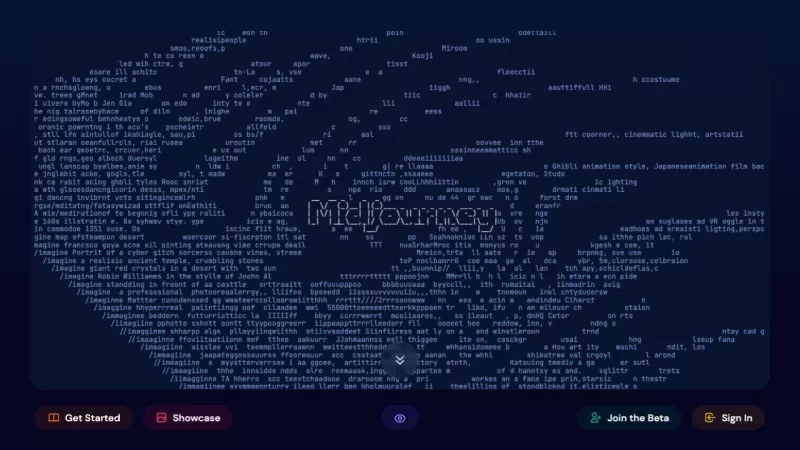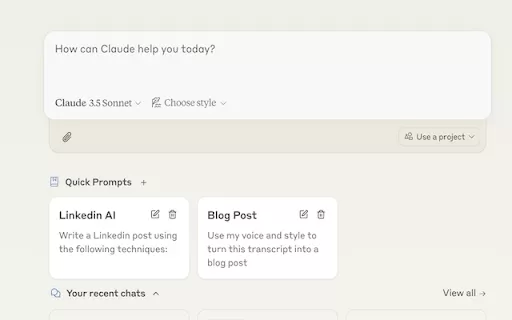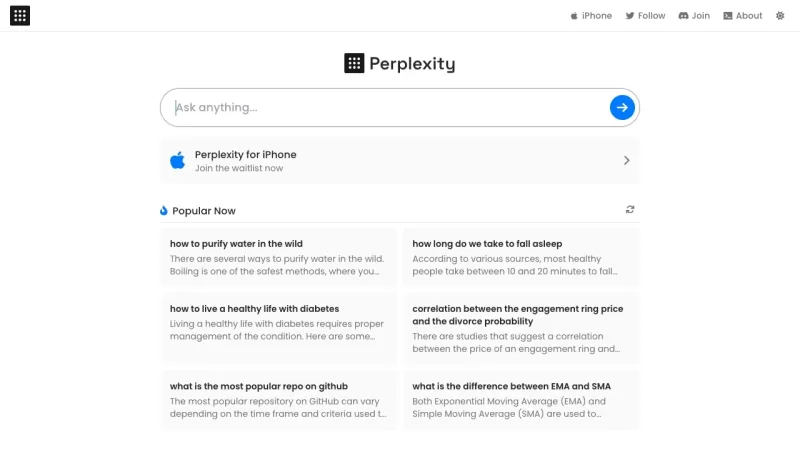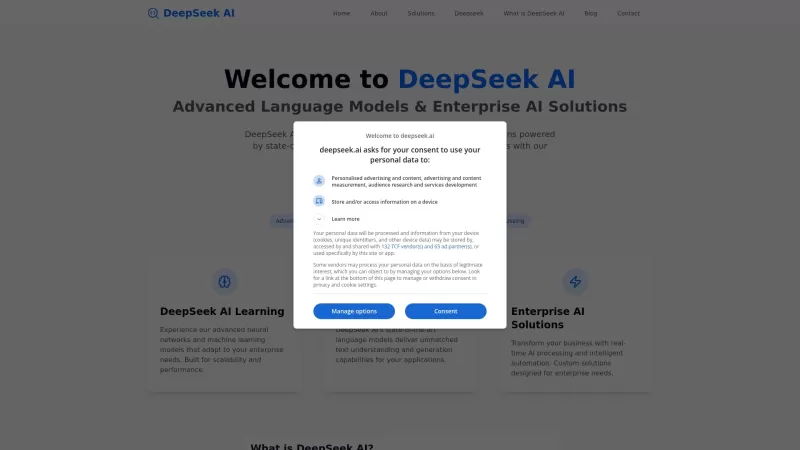Mastering Creative Expression and Games: Unleash the Fun

 April 26, 2025
April 26, 2025

 GeorgeTaylor
GeorgeTaylor

 0
0
Creativity is truly the heartbeat of innovation, igniting fresh ideas and turning the ordinary into something extraordinary. Whether you're an experienced artist or just starting out, tapping into your creativity is vital. Games, too, serve as a fantastic platform for both fun and learning, pushing the limits of our imagination and teamwork. When you blend creative tools with gaming, a whole new world of possibilities emerges. This guide dives into the essence of creativity, the role of AI in boosting it, and the captivating world of games, offering insights and practical tips to enhance your creative and gaming journey.
Key Points
- Exploring the foundational elements of creative expression.
- Understanding how AI tools can enhance creativity.
- Using games as a platform for creative exploration and skill development.
- Combining AI and gaming for innovative results.
- Practical steps to boost personal creativity and game engagement.
Decoding Creativity: Foundational Elements
What is Creative Expression?
Creative expression is about bringing original ideas and thoughts to life through various mediums. It's more than just copying; it's about adding your unique flair and interpretation. From painting and writing to music and digital arts, the avenues are limitless. Grasping the core elements of creative expression is your first step towards unlocking your potential. The creative process often involves stages like preparation, incubation, illumination, and verification, each playing a crucial role in producing innovative and meaningful work. Creativity is invaluable in both personal and professional spheres, enhancing problem-solving skills, driving innovation, and boosting overall well-being.

Whether you're aiming to refine your art, create compelling content, or simply approach challenges with a fresh perspective, mastering the basics of creative expression is crucial.
Key Elements of Creative Expression:
- Originality: The ability to come up with new and unique ideas.
- Imagination: Creating mental images or concepts of what isn't currently present.
- Interpretation: Understanding and explaining something in your own unique way.
- Personal Touch: Infusing your creations with your distinctive style and perspective.
Tools for Creative Expression:
- Digital Art Software: Adobe Photoshop, Procreate, Corel Painter.
- Writing Platforms: Medium, WordPress, Google Docs.
- Music Composition Software: Ableton Live, Logic Pro, GarageBand.
- Video Editing Software: Adobe Premiere Pro, Final Cut Pro, DaVinci Resolve.
Breaking Down Creative Barriers
Overcoming creative barriers can be a real challenge, whether they're internal, like fear of failure or self-doubt, or external, such as limited resources or time. Recognizing these hurdles and finding ways to overcome them is key to nurturing a creative mindset. Techniques like brainstorming, mind mapping, and freewriting can help dismantle mental blocks and generate fresh ideas. Creating a supportive environment and setting achievable goals can also boost your confidence and encourage you to experiment. Remember, creativity isn't about perfection; it's about exploration and growth. Embracing failure as a learning opportunity can lead to significant creative breakthroughs. Setting realistic goals helps prevent burnout and ensures steady progress. Understanding and managing these challenges is essential to unlocking sustained creative potential.
Strategies to Overcome Creative Barriers:
- Brainstorming: Generating a plethora of ideas without initial judgment.
- Mind Mapping: Visually organizing thoughts and ideas around a central theme.
- Freewriting: Writing continuously for a set time without worrying about grammar or structure.
- Meditation: Practicing mindfulness to reduce stress and enhance focus.
- Seeking Feedback: Sharing your work and being open to constructive criticism.
AI as a Creative Ally: Augmenting Human Potential
Introduction to AI in Creative Fields
Artificial Intelligence (AI) is reshaping creative fields, providing new tools that amplify human potential. AI can help with tasks like idea generation, content creation, and automated design, allowing creatives to focus on more strategic and innovative aspects of their work. By analyzing vast datasets, AI can identify trends and patterns, offering insights that might otherwise be overlooked. This data-driven approach can lead to better-informed creative decisions and more effective outcomes. AI can also personalize creative experiences, tailoring content to individual preferences and needs, which enhances engagement and satisfaction. It's crucial to understand that AI is not here to replace human creativity but to enhance and extend it.
AI Applications in Creativity:
- AI-Powered Design Tools: Automating repetitive design tasks to save time and resources.
- AI-Assisted Writing: Generating content outlines, suggesting vocabulary, and improving grammar.
- AI Music Composition: Creating melodies, harmonies, and rhythms based on user inputs.
- AI Video Editing: Automatically assembling footage, adding effects, and optimizing video quality.
Tools Utilizing AI for Creativity:
- Jasper: An AI writing assistant for creating marketing copy and blog content.
- RunwayML: A platform for experimenting with AI models for art, music, and video.
- Amper Music: An AI music composition tool for generating royalty-free music.
- DeepMotion: AI-powered motion capture for animation and gaming.
AI-Driven Idea Generation: A Deeper Dive
AI's role in idea generation is truly fascinating. AI algorithms can sift through massive datasets to spot patterns and connections that might elude us, sparking innovative concepts. These tools can provide a wealth of information, from trending topics and market gaps to unique aesthetic combinations. However, AI-generated ideas should be seen as a starting point, not the end product. Human creativity is essential to refine, contextualize, and add personal meaning to these ideas. Tools like GPT-3 and other Large Language Models can brainstorm ideas, create outlines, and even generate initial drafts. The key is to use AI as a collaborative partner, leveraging its analytical power to amplify human imagination and insight. By combining AI's capabilities with human intuition, you can unlock a new level of creative potential. This process involves inputting specific parameters or keywords and using the AI's output as a springboard for further development.
Using AI for Idea Generation:
- Market Research: Analyzing market trends and identifying unmet needs.
- Trend Analysis: Identifying emerging patterns and predicting future trends.
- Content Ideation: Generating blog post topics, video ideas, and social media content.
- Product Development: Discovering new product concepts and features.
Examples of AI for Idea Generation:
- BuzzSumo: Identifies trending content and key influencers in various niches.
- AnswerThePublic: Generates questions and topics based on keyword searches.
- Ubersuggest: Provides keyword ideas and content suggestions for SEO.
Enhancing Content with AI: A User's Perspective
AI's impact on content creation is becoming increasingly significant, offering tools that can automate various aspects of the process. From generating blog posts and articles to crafting marketing copy and social media updates, AI can drastically reduce the time and effort needed. Tools like Jasper and Copy.ai use AI to create high-quality, engaging content tailored to specific audiences and purposes. AI can also assist with grammar checking, style improvement, and SEO optimization, ensuring your content is effective and polished. By analyzing user data, AI can identify the most engaging topics and formats, helping you create content that resonates with your audience. This user-centric approach can lead to higher engagement rates and improved content performance. However, it's crucial to maintain a human touch in AI-generated content, adding personal insights and unique perspectives to ensure authenticity and relevance.
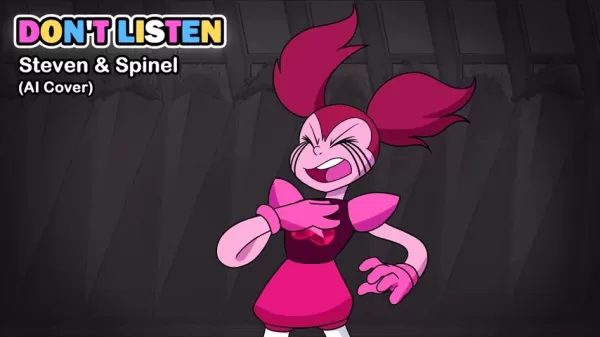
AI is a powerful tool for enhancing content creation, but it should be used alongside human creativity and judgment.
AI Applications in Content Creation:
- Blog Post Generation: Creating articles, outlines, and summaries for blog posts.
- Marketing Copywriting: Generating ad copy, email campaigns, and landing page content.
- Social Media Management: Scheduling posts, suggesting captions, and analyzing engagement.
- SEO Optimization: Identifying keywords, optimizing meta descriptions, and improving readability.
Tools for AI-Enhanced Content Creation:
- Copy.ai: An AI-powered copywriting tool for creating marketing content.
- Rytr: An AI writing assistant for generating blog posts, articles, and social media updates.
- Outwrite: An AI grammar and style checker for improving writing quality.
- Surfer SEO: A tool for optimizing content for search engines using AI insights.
Step-by-Step Guide: Integrating AI into Your Creative Workflow
Step 1: Identify Your Needs
The first step is to clearly define your creative needs and challenges. Are you struggling with idea generation? Do you need help with content creation? Or are you looking to optimize your design process? Identifying your specific needs will help you choose the right AI tools and strategies. Conduct a thorough assessment of your current workflow to pinpoint areas where AI can provide the most value. List all the tasks that are time-consuming and consider how AI could streamline these processes.
Step 2: Select the Right AI Tools
Once you know your needs, research and select AI tools that best address them. There are numerous AI tools available for various creative tasks, so choose those that align with your goals and skill level. Consider factors like ease of use, pricing, features, and compatibility with your existing software. Look for tools offering free trials or demo versions to test them before committing. Reading reviews and testimonials from other users can provide insights into a tool's strengths and weaknesses. Experiment with different tools to find which ones work best for you.
Step 3: Integrate AI into Your Workflow
After selecting your AI tools, begin integrating them into your creative workflow. Start with small, manageable tasks to familiarize yourself with how the tools work and how they can support your creative process. Gradually expand the use of AI as you become more comfortable. Set clear goals for each task and track your progress to measure the impact of AI on your efficiency and output. Be prepared to adjust your workflow as needed, as AI integration is an iterative process. Continuously think of more processes and tasks where AI can enhance efficiency.
Step 4: Refine and Personalize
Remember that AI-generated content should serve as a foundation, not a final product. Refine and personalize the AI's output to ensure it reflects your unique style and perspective. Add your own insights, experiences, and personal touches to make the content more authentic and engaging. Use AI to augment your creativity, not replace it. Experiment with different approaches and techniques to discover innovative ways to use AI in your creative process. Human judgment is crucial when producing creative content, so use it wisely in combination with the AI tools you've chosen.
Step 5: Evaluate and Adapt
Regularly evaluate the performance of your AI tools and their impact on your creative workflow. Track metrics like time savings, content quality, and user engagement to assess the effectiveness of your AI integration. Be prepared to adapt your approach as needed, as AI technology is constantly evolving. Stay informed about the latest developments in AI and explore new tools and techniques to continuously improve your creative process. Remember, AI is a tool to enhance your creative process, not replace it, so there's always room for manual improvements.
Pros and Cons of Using AI in Creativity
Pros
- Increased Efficiency: Streamlining tasks and saving time.
- Enhanced Idea Generation: Providing new and innovative ideas.
- Personalized Content: Tailoring content to individual preferences.
- Automation of Repetitive Tasks: Freeing up time for more creative work.
- Improved Content Quality: Enhancing the overall quality of creative output.
Cons
- Lack of Authenticity: AI-generated content might lack a personal touch.
- Potential for Bias: AI algorithms may introduce biases.
- Dependence on Technology: Over-reliance on AI can hinder human creativity.
- Ethical Concerns: Issues related to transparency and intellectual property.
- Cost of Implementation: The initial investment in AI tools can be high.
Real-World Applications: Use Cases for AI in Creativity
AI in Marketing: Streamlining Content Creation
In marketing, AI is revolutionizing content creation, enabling marketers to produce engaging content more efficiently. AI tools can generate ad copy, blog posts, and social media updates tailored to specific target audiences. By analyzing vast datasets, these tools identify trends and patterns, providing insights that inform content strategy and improve campaign performance. AI can automate tasks like keyword research, SEO optimization, and content scheduling, allowing marketers to focus on more strategic initiatives. Brands are using AI to personalize customer experiences, creating customized content that resonates with individual preferences and needs, enhancing engagement and driving conversions. AI is transforming marketing content creation, making it more efficient, effective, and personalized, giving marketing specialists more time to focus on other tasks that improve overall efficiency.
AI in Music: Composing Original Melodies
AI is transforming the music industry, empowering musicians to compose original melodies and experiment with new sounds. AI music composition tools can generate melodies, harmonies, and rhythms based on user inputs, opening up new creative possibilities. These tools analyze vast libraries of musical data to identify patterns and trends, providing insights that inspire innovation. AI can also assist with tasks like music arrangement, mixing, and mastering, streamlining the production process. Musicians are using AI to create personalized music experiences, tailoring soundtracks to individual preferences and moods. AI is revolutionizing music composition, making it more accessible, efficient, and personalized, allowing musicians more time for other creative tasks.
AI in Design: Automating Repetitive Tasks
In the field of design, AI is automating repetitive tasks, freeing up designers to focus on more strategic and creative aspects of their work. AI-powered design tools can generate layouts, create mockups, and optimize visual elements, saving designers valuable time and effort. These tools analyze user data to identify the most effective design patterns and aesthetic combinations, improving the overall quality and impact of design projects. AI can also assist with tasks like image editing, color correction, and typography, ensuring designs are visually appealing and consistent with brand guidelines. Designers are leveraging AI to create personalized user experiences, tailoring visual content to individual preferences and needs. AI is transforming the design process, making it more efficient, effective, and personalized, enhancing the overall quality of the creative output.
Frequently Asked Questions (FAQ)
How does AI enhance creativity rather than replace it?
AI tools are designed to augment human creativity by automating repetitive tasks, generating ideas, and providing insights. They serve as collaborative partners, allowing creatives to focus on more strategic and innovative aspects of their work, ultimately enhancing the overall creative process.
What are some common creative barriers, and how can they be overcome?
Common creative barriers include fear of failure, self-doubt, lack of resources, and time constraints. Strategies to overcome these barriers include brainstorming, mind mapping, freewriting, setting realistic goals, seeking feedback, and creating a supportive environment.
How can games be used as a platform for creative expression?
Games offer a unique platform for creative expression by allowing users to create characters, design levels, write storylines, and collaborate with others. They provide opportunities for problem-solving, experimentation, and skill development, fostering a dynamic and engaging creative environment.
What are some ethical considerations when using AI in creative endeavors?
Ethical considerations include ensuring transparency in AI-generated content, avoiding bias in AI algorithms, protecting intellectual property rights, and maintaining a balance between AI assistance and human creativity. It’s important to use AI responsibly and ethically to maximize its benefits while minimizing potential risks.
Related Questions
How can I stay updated with the latest advancements in AI for creative applications?
Staying updated with the latest advancements in AI for creative applications involves continuous learning and exploring new tools and techniques. Subscribe to industry newsletters, attend webinars and conferences, participate in online communities, and follow experts in the field. Experiment with new AI tools and techniques to discover innovative ways to enhance your creative process. Regular practice and continuous learning are essential for staying ahead in this rapidly evolving field. Also, follow the social media pages of popular AI tools and check their websites regularly, as AI tools evolve quickly and staying up-to-date is crucial for maintaining efficiency.
What skills are essential for leveraging AI in creative fields?
Essential skills for leveraging AI in creative fields include critical thinking, problem-solving, communication, and adaptability. You need to be able to evaluate AI-generated content, refine it to meet your specific needs, and integrate it seamlessly into your creative workflow. Strong communication skills are necessary for collaborating with AI tools and expressing your creative vision effectively. Adaptability is crucial for staying ahead in this rapidly evolving field and embracing new tools and techniques.
Related article
 Alarming rise in AI-powered scams: Microsoft reveals $4 Billion in thwarted fraud
The Rapid Evolution of AI-Powered ScamsAI-powered scams are on the rise, with cybercriminals leveraging cutting-edge technology to deceive victims more effectively than ever before. According to Microsoft's latest Cyber Signals report, the tech giant has thwarted $4 billion in fraud attempts over th
Alarming rise in AI-powered scams: Microsoft reveals $4 Billion in thwarted fraud
The Rapid Evolution of AI-Powered ScamsAI-powered scams are on the rise, with cybercriminals leveraging cutting-edge technology to deceive victims more effectively than ever before. According to Microsoft's latest Cyber Signals report, the tech giant has thwarted $4 billion in fraud attempts over th
 AI Art Styles: Unique Images Generated with Midjourney Prompts
Are you eager to elevate your AI art creations? With tools like Midjourney and other AI art platforms at your fingertips, producing stunning visuals has never been simpler. Yet, sticking to basic prompts often results in generic images. The secret to standout artwork lies in mastering unique styles
AI Art Styles: Unique Images Generated with Midjourney Prompts
Are you eager to elevate your AI art creations? With tools like Midjourney and other AI art platforms at your fingertips, producing stunning visuals has never been simpler. Yet, sticking to basic prompts often results in generic images. The secret to standout artwork lies in mastering unique styles
 Exploring Creative Female Figure Designs in AI-Generated Art
The world of art is in a constant state of flux, and right now, artificial intelligence (AI) is leading the charge into a thrilling new era. AI-generated art is producing breathtaking visuals, especially in the realm of character design. In this blog post, we'll dive deep into the enchanting and det
Comments (0)
0/200
Exploring Creative Female Figure Designs in AI-Generated Art
The world of art is in a constant state of flux, and right now, artificial intelligence (AI) is leading the charge into a thrilling new era. AI-generated art is producing breathtaking visuals, especially in the realm of character design. In this blog post, we'll dive deep into the enchanting and det
Comments (0)
0/200

 April 26, 2025
April 26, 2025

 GeorgeTaylor
GeorgeTaylor

 0
0
Creativity is truly the heartbeat of innovation, igniting fresh ideas and turning the ordinary into something extraordinary. Whether you're an experienced artist or just starting out, tapping into your creativity is vital. Games, too, serve as a fantastic platform for both fun and learning, pushing the limits of our imagination and teamwork. When you blend creative tools with gaming, a whole new world of possibilities emerges. This guide dives into the essence of creativity, the role of AI in boosting it, and the captivating world of games, offering insights and practical tips to enhance your creative and gaming journey.
Key Points
- Exploring the foundational elements of creative expression.
- Understanding how AI tools can enhance creativity.
- Using games as a platform for creative exploration and skill development.
- Combining AI and gaming for innovative results.
- Practical steps to boost personal creativity and game engagement.
Decoding Creativity: Foundational Elements
What is Creative Expression?
Creative expression is about bringing original ideas and thoughts to life through various mediums. It's more than just copying; it's about adding your unique flair and interpretation. From painting and writing to music and digital arts, the avenues are limitless. Grasping the core elements of creative expression is your first step towards unlocking your potential. The creative process often involves stages like preparation, incubation, illumination, and verification, each playing a crucial role in producing innovative and meaningful work. Creativity is invaluable in both personal and professional spheres, enhancing problem-solving skills, driving innovation, and boosting overall well-being.

Whether you're aiming to refine your art, create compelling content, or simply approach challenges with a fresh perspective, mastering the basics of creative expression is crucial.
Key Elements of Creative Expression:
- Originality: The ability to come up with new and unique ideas.
- Imagination: Creating mental images or concepts of what isn't currently present.
- Interpretation: Understanding and explaining something in your own unique way.
- Personal Touch: Infusing your creations with your distinctive style and perspective.
Tools for Creative Expression:
- Digital Art Software: Adobe Photoshop, Procreate, Corel Painter.
- Writing Platforms: Medium, WordPress, Google Docs.
- Music Composition Software: Ableton Live, Logic Pro, GarageBand.
- Video Editing Software: Adobe Premiere Pro, Final Cut Pro, DaVinci Resolve.
Breaking Down Creative Barriers
Overcoming creative barriers can be a real challenge, whether they're internal, like fear of failure or self-doubt, or external, such as limited resources or time. Recognizing these hurdles and finding ways to overcome them is key to nurturing a creative mindset. Techniques like brainstorming, mind mapping, and freewriting can help dismantle mental blocks and generate fresh ideas. Creating a supportive environment and setting achievable goals can also boost your confidence and encourage you to experiment. Remember, creativity isn't about perfection; it's about exploration and growth. Embracing failure as a learning opportunity can lead to significant creative breakthroughs. Setting realistic goals helps prevent burnout and ensures steady progress. Understanding and managing these challenges is essential to unlocking sustained creative potential.
Strategies to Overcome Creative Barriers:
- Brainstorming: Generating a plethora of ideas without initial judgment.
- Mind Mapping: Visually organizing thoughts and ideas around a central theme.
- Freewriting: Writing continuously for a set time without worrying about grammar or structure.
- Meditation: Practicing mindfulness to reduce stress and enhance focus.
- Seeking Feedback: Sharing your work and being open to constructive criticism.
AI as a Creative Ally: Augmenting Human Potential
Introduction to AI in Creative Fields
Artificial Intelligence (AI) is reshaping creative fields, providing new tools that amplify human potential. AI can help with tasks like idea generation, content creation, and automated design, allowing creatives to focus on more strategic and innovative aspects of their work. By analyzing vast datasets, AI can identify trends and patterns, offering insights that might otherwise be overlooked. This data-driven approach can lead to better-informed creative decisions and more effective outcomes. AI can also personalize creative experiences, tailoring content to individual preferences and needs, which enhances engagement and satisfaction. It's crucial to understand that AI is not here to replace human creativity but to enhance and extend it.
AI Applications in Creativity:
- AI-Powered Design Tools: Automating repetitive design tasks to save time and resources.
- AI-Assisted Writing: Generating content outlines, suggesting vocabulary, and improving grammar.
- AI Music Composition: Creating melodies, harmonies, and rhythms based on user inputs.
- AI Video Editing: Automatically assembling footage, adding effects, and optimizing video quality.
Tools Utilizing AI for Creativity:
- Jasper: An AI writing assistant for creating marketing copy and blog content.
- RunwayML: A platform for experimenting with AI models for art, music, and video.
- Amper Music: An AI music composition tool for generating royalty-free music.
- DeepMotion: AI-powered motion capture for animation and gaming.
AI-Driven Idea Generation: A Deeper Dive
AI's role in idea generation is truly fascinating. AI algorithms can sift through massive datasets to spot patterns and connections that might elude us, sparking innovative concepts. These tools can provide a wealth of information, from trending topics and market gaps to unique aesthetic combinations. However, AI-generated ideas should be seen as a starting point, not the end product. Human creativity is essential to refine, contextualize, and add personal meaning to these ideas. Tools like GPT-3 and other Large Language Models can brainstorm ideas, create outlines, and even generate initial drafts. The key is to use AI as a collaborative partner, leveraging its analytical power to amplify human imagination and insight. By combining AI's capabilities with human intuition, you can unlock a new level of creative potential. This process involves inputting specific parameters or keywords and using the AI's output as a springboard for further development.
Using AI for Idea Generation:
- Market Research: Analyzing market trends and identifying unmet needs.
- Trend Analysis: Identifying emerging patterns and predicting future trends.
- Content Ideation: Generating blog post topics, video ideas, and social media content.
- Product Development: Discovering new product concepts and features.
Examples of AI for Idea Generation:
- BuzzSumo: Identifies trending content and key influencers in various niches.
- AnswerThePublic: Generates questions and topics based on keyword searches.
- Ubersuggest: Provides keyword ideas and content suggestions for SEO.
Enhancing Content with AI: A User's Perspective
AI's impact on content creation is becoming increasingly significant, offering tools that can automate various aspects of the process. From generating blog posts and articles to crafting marketing copy and social media updates, AI can drastically reduce the time and effort needed. Tools like Jasper and Copy.ai use AI to create high-quality, engaging content tailored to specific audiences and purposes. AI can also assist with grammar checking, style improvement, and SEO optimization, ensuring your content is effective and polished. By analyzing user data, AI can identify the most engaging topics and formats, helping you create content that resonates with your audience. This user-centric approach can lead to higher engagement rates and improved content performance. However, it's crucial to maintain a human touch in AI-generated content, adding personal insights and unique perspectives to ensure authenticity and relevance.

AI is a powerful tool for enhancing content creation, but it should be used alongside human creativity and judgment.
AI Applications in Content Creation:
- Blog Post Generation: Creating articles, outlines, and summaries for blog posts.
- Marketing Copywriting: Generating ad copy, email campaigns, and landing page content.
- Social Media Management: Scheduling posts, suggesting captions, and analyzing engagement.
- SEO Optimization: Identifying keywords, optimizing meta descriptions, and improving readability.
Tools for AI-Enhanced Content Creation:
- Copy.ai: An AI-powered copywriting tool for creating marketing content.
- Rytr: An AI writing assistant for generating blog posts, articles, and social media updates.
- Outwrite: An AI grammar and style checker for improving writing quality.
- Surfer SEO: A tool for optimizing content for search engines using AI insights.
Step-by-Step Guide: Integrating AI into Your Creative Workflow
Step 1: Identify Your Needs
The first step is to clearly define your creative needs and challenges. Are you struggling with idea generation? Do you need help with content creation? Or are you looking to optimize your design process? Identifying your specific needs will help you choose the right AI tools and strategies. Conduct a thorough assessment of your current workflow to pinpoint areas where AI can provide the most value. List all the tasks that are time-consuming and consider how AI could streamline these processes.
Step 2: Select the Right AI Tools
Once you know your needs, research and select AI tools that best address them. There are numerous AI tools available for various creative tasks, so choose those that align with your goals and skill level. Consider factors like ease of use, pricing, features, and compatibility with your existing software. Look for tools offering free trials or demo versions to test them before committing. Reading reviews and testimonials from other users can provide insights into a tool's strengths and weaknesses. Experiment with different tools to find which ones work best for you.
Step 3: Integrate AI into Your Workflow
After selecting your AI tools, begin integrating them into your creative workflow. Start with small, manageable tasks to familiarize yourself with how the tools work and how they can support your creative process. Gradually expand the use of AI as you become more comfortable. Set clear goals for each task and track your progress to measure the impact of AI on your efficiency and output. Be prepared to adjust your workflow as needed, as AI integration is an iterative process. Continuously think of more processes and tasks where AI can enhance efficiency.
Step 4: Refine and Personalize
Remember that AI-generated content should serve as a foundation, not a final product. Refine and personalize the AI's output to ensure it reflects your unique style and perspective. Add your own insights, experiences, and personal touches to make the content more authentic and engaging. Use AI to augment your creativity, not replace it. Experiment with different approaches and techniques to discover innovative ways to use AI in your creative process. Human judgment is crucial when producing creative content, so use it wisely in combination with the AI tools you've chosen.
Step 5: Evaluate and Adapt
Regularly evaluate the performance of your AI tools and their impact on your creative workflow. Track metrics like time savings, content quality, and user engagement to assess the effectiveness of your AI integration. Be prepared to adapt your approach as needed, as AI technology is constantly evolving. Stay informed about the latest developments in AI and explore new tools and techniques to continuously improve your creative process. Remember, AI is a tool to enhance your creative process, not replace it, so there's always room for manual improvements.
Pros and Cons of Using AI in Creativity
Pros
- Increased Efficiency: Streamlining tasks and saving time.
- Enhanced Idea Generation: Providing new and innovative ideas.
- Personalized Content: Tailoring content to individual preferences.
- Automation of Repetitive Tasks: Freeing up time for more creative work.
- Improved Content Quality: Enhancing the overall quality of creative output.
Cons
- Lack of Authenticity: AI-generated content might lack a personal touch.
- Potential for Bias: AI algorithms may introduce biases.
- Dependence on Technology: Over-reliance on AI can hinder human creativity.
- Ethical Concerns: Issues related to transparency and intellectual property.
- Cost of Implementation: The initial investment in AI tools can be high.
Real-World Applications: Use Cases for AI in Creativity
AI in Marketing: Streamlining Content Creation
In marketing, AI is revolutionizing content creation, enabling marketers to produce engaging content more efficiently. AI tools can generate ad copy, blog posts, and social media updates tailored to specific target audiences. By analyzing vast datasets, these tools identify trends and patterns, providing insights that inform content strategy and improve campaign performance. AI can automate tasks like keyword research, SEO optimization, and content scheduling, allowing marketers to focus on more strategic initiatives. Brands are using AI to personalize customer experiences, creating customized content that resonates with individual preferences and needs, enhancing engagement and driving conversions. AI is transforming marketing content creation, making it more efficient, effective, and personalized, giving marketing specialists more time to focus on other tasks that improve overall efficiency.
AI in Music: Composing Original Melodies
AI is transforming the music industry, empowering musicians to compose original melodies and experiment with new sounds. AI music composition tools can generate melodies, harmonies, and rhythms based on user inputs, opening up new creative possibilities. These tools analyze vast libraries of musical data to identify patterns and trends, providing insights that inspire innovation. AI can also assist with tasks like music arrangement, mixing, and mastering, streamlining the production process. Musicians are using AI to create personalized music experiences, tailoring soundtracks to individual preferences and moods. AI is revolutionizing music composition, making it more accessible, efficient, and personalized, allowing musicians more time for other creative tasks.
AI in Design: Automating Repetitive Tasks
In the field of design, AI is automating repetitive tasks, freeing up designers to focus on more strategic and creative aspects of their work. AI-powered design tools can generate layouts, create mockups, and optimize visual elements, saving designers valuable time and effort. These tools analyze user data to identify the most effective design patterns and aesthetic combinations, improving the overall quality and impact of design projects. AI can also assist with tasks like image editing, color correction, and typography, ensuring designs are visually appealing and consistent with brand guidelines. Designers are leveraging AI to create personalized user experiences, tailoring visual content to individual preferences and needs. AI is transforming the design process, making it more efficient, effective, and personalized, enhancing the overall quality of the creative output.
Frequently Asked Questions (FAQ)
How does AI enhance creativity rather than replace it?
AI tools are designed to augment human creativity by automating repetitive tasks, generating ideas, and providing insights. They serve as collaborative partners, allowing creatives to focus on more strategic and innovative aspects of their work, ultimately enhancing the overall creative process.
What are some common creative barriers, and how can they be overcome?
Common creative barriers include fear of failure, self-doubt, lack of resources, and time constraints. Strategies to overcome these barriers include brainstorming, mind mapping, freewriting, setting realistic goals, seeking feedback, and creating a supportive environment.
How can games be used as a platform for creative expression?
Games offer a unique platform for creative expression by allowing users to create characters, design levels, write storylines, and collaborate with others. They provide opportunities for problem-solving, experimentation, and skill development, fostering a dynamic and engaging creative environment.
What are some ethical considerations when using AI in creative endeavors?
Ethical considerations include ensuring transparency in AI-generated content, avoiding bias in AI algorithms, protecting intellectual property rights, and maintaining a balance between AI assistance and human creativity. It’s important to use AI responsibly and ethically to maximize its benefits while minimizing potential risks.
Related Questions
How can I stay updated with the latest advancements in AI for creative applications?
Staying updated with the latest advancements in AI for creative applications involves continuous learning and exploring new tools and techniques. Subscribe to industry newsletters, attend webinars and conferences, participate in online communities, and follow experts in the field. Experiment with new AI tools and techniques to discover innovative ways to enhance your creative process. Regular practice and continuous learning are essential for staying ahead in this rapidly evolving field. Also, follow the social media pages of popular AI tools and check their websites regularly, as AI tools evolve quickly and staying up-to-date is crucial for maintaining efficiency.
What skills are essential for leveraging AI in creative fields?
Essential skills for leveraging AI in creative fields include critical thinking, problem-solving, communication, and adaptability. You need to be able to evaluate AI-generated content, refine it to meet your specific needs, and integrate it seamlessly into your creative workflow. Strong communication skills are necessary for collaborating with AI tools and expressing your creative vision effectively. Adaptability is crucial for staying ahead in this rapidly evolving field and embracing new tools and techniques.
 AI Art Styles: Unique Images Generated with Midjourney Prompts
Are you eager to elevate your AI art creations? With tools like Midjourney and other AI art platforms at your fingertips, producing stunning visuals has never been simpler. Yet, sticking to basic prompts often results in generic images. The secret to standout artwork lies in mastering unique styles
AI Art Styles: Unique Images Generated with Midjourney Prompts
Are you eager to elevate your AI art creations? With tools like Midjourney and other AI art platforms at your fingertips, producing stunning visuals has never been simpler. Yet, sticking to basic prompts often results in generic images. The secret to standout artwork lies in mastering unique styles
 Exploring Creative Female Figure Designs in AI-Generated Art
The world of art is in a constant state of flux, and right now, artificial intelligence (AI) is leading the charge into a thrilling new era. AI-generated art is producing breathtaking visuals, especially in the realm of character design. In this blog post, we'll dive deep into the enchanting and det
Exploring Creative Female Figure Designs in AI-Generated Art
The world of art is in a constant state of flux, and right now, artificial intelligence (AI) is leading the charge into a thrilling new era. AI-generated art is producing breathtaking visuals, especially in the realm of character design. In this blog post, we'll dive deep into the enchanting and det
5 Easy Steps to Reclaim Your Online Data Privacy - Start Today
7 Reasons Kindles Remain a Great Purchase, Even Without Downloads